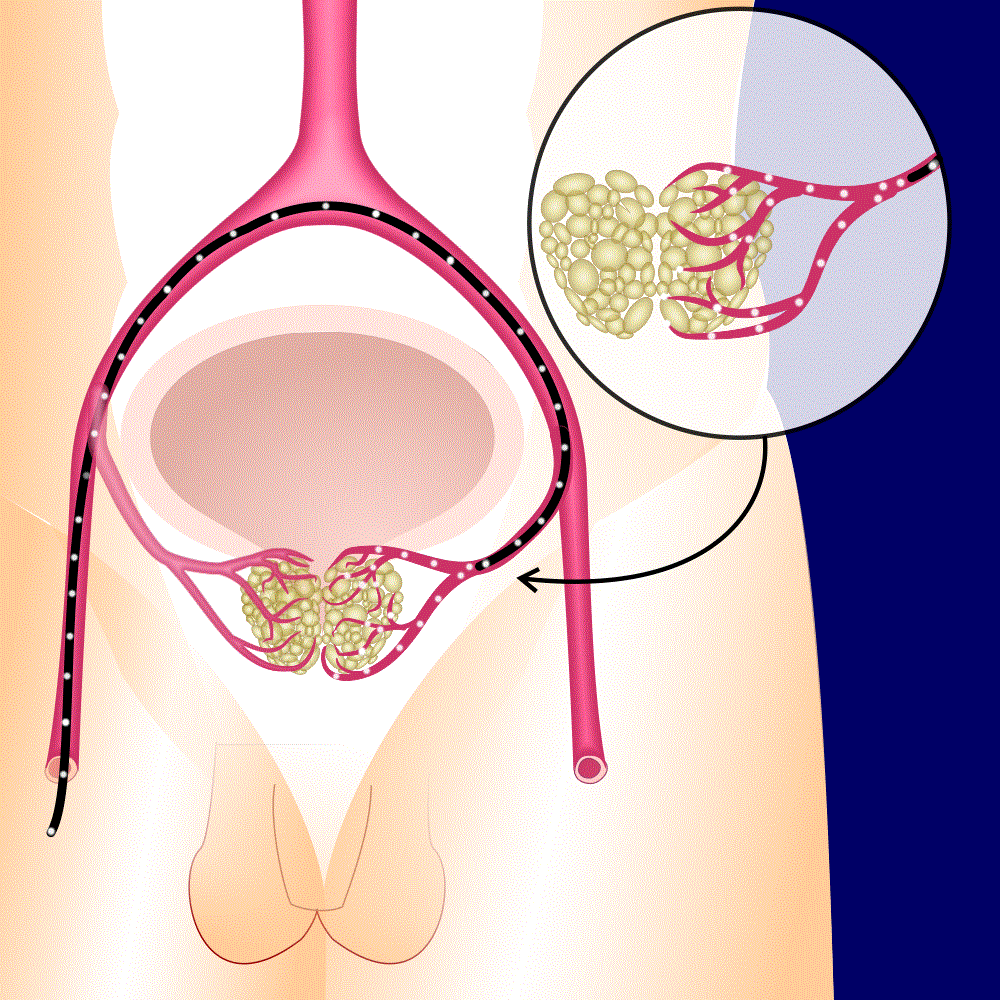Prostate Artery Embolization
(Conditions treated: Prostate hypertrophy; Poor urine stream.)
What is benign prostate hypertrophy?
This is a non-cancerous condition which results in gradual enlargement of the prostate. It is problematic if this squeezes the urethra and restricts the flow of urine.
What are the symptoms of benign prostate hypertrophy?
A range of symptoms which can be attributed to this condition, these include but are not limited to:
Urge to urinate frequently
Urination at night. This can cause significant sleep disturbance
Sudden and compelling urges to go the toilet
Poor urinary stream
Difficulty initiating urination
What is Prostate Artery Embolization?
This is a novel, emerging technique which uses minimally invasive angiography to shrink the prostate by selectively starving it of its blood supply. This procedure has recently been approved as a first line treatment for benign prostate hypertrophy by the National Institute for Clinical Excellence in the UK. A useful patient centred discussion on embolization and prostate hypertrophy can be found here.
What are my treatment options?
Traditionally patients are managed with medications or surgery. The surgical options most commonly performed involves removing prostate tissue via a tube placed in the urethra.
How is prostate embolization performed?
The procedure is performed under light sedation. A small 1-3mm nick is made in the skin and through this a series of specially designed plastic catheters are directed under x-ray guidance to the prostate arteries. Microscopic particles are then injected, blocking the blood supply to the prostate. Over the next few months your prostate will gradually shrink. The concept is outlined in this video.
What are the advantages over surgery?
This procedure does not require general anaesthetic and may be performed safely on prostates of any size. It has a significantly faster recovery time and may be performed as a day procedure. In addition the incidence of some complications such as retrograde ejaculation for example are less.
What are the disadvantages of embolization?
This procedure is rather technically challenging with limited numbers of interventional radiologists offering it at this stage. It is not always possible to achieve technical success as the prostate arteries can be very small and challenging to access, in particular in patients with vascular disease.
If I have prostate embolization which was a technical failure or only partially relieved my symptoms can I proceed to have surgery at a later date?
You can undergo surgery after a failed prostate embolization.
What happens after the procedure?
You may be discharged 4 hours after the procedure. You cannot drive for 24 hours afterwards as you have been sedated. You will notice some mild to moderate discomfort and pain relating to the prostate which generally only lasts a couple of days. Over the next few weeks to months you should notice a gradual improvement in your symptoms. While some men notice ongoing improvement up to 12 months later, most changes occur in the first 2-6 months.
Can this be performed if a have a very large prostate?
Embolization can be performed on very large prostates including those which may be considered too large for a TURP. Prostate artery embolization has been shown to be effective in patients with urinary catheters in place due to urinary retention, however the evidence supporting this is less robust than standard prostate embolization. A paper examining embolization in large prostates can be found here.
Can I consult a Urologist?
We insist all patients who are interested in prostate artery embolization are reviewed by a Specialist Urologist. This ensures that all our patients are given not only the correct diagnosis but are also fully informed of their medical and surgical options.


